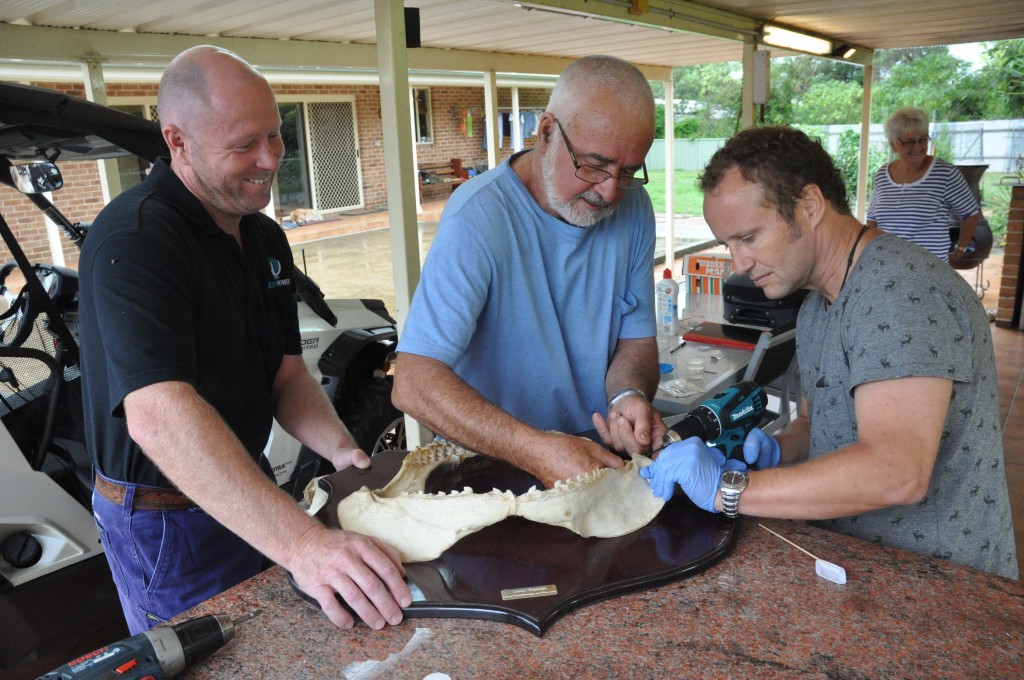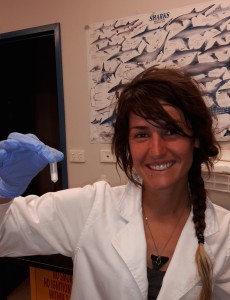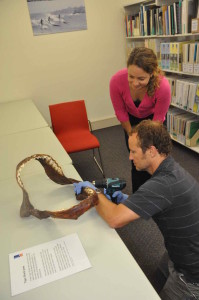Members of Game Fishing Clubs in Queensland and New South Wales are helping MFL researchers at the University of Queensland.
In April 2015, visiting Danish research scientist Professor Einar Nielsen and pelagic fish expert Dr Julian Pepperell visited clubs in eastern Australia.
 Following considerable detective work to locate old jaws, many fishers and club officials were kind enough to allow a small hole to be drilled into their tiger shark jaws. The dust or bio-swarf from the drilling was collected in a small tube.
Following considerable detective work to locate old jaws, many fishers and club officials were kind enough to allow a small hole to be drilled into their tiger shark jaws. The dust or bio-swarf from the drilling was collected in a small tube.
 Back at MFL at the University of Queensland, DNA was extracted from the bio-swarf [Photo 2015 Honours student Safia Maher with tube of bio-swarf].
Back at MFL at the University of Queensland, DNA was extracted from the bio-swarf [Photo 2015 Honours student Safia Maher with tube of bio-swarf].
A jaw-set belonging to David Tubman of the Newcastle Port Stephens Game Fish Club gave 44 nanograms of DNA per milligram of jaw swarf, which is more than sufficient for genetic analysis. This jaw was from a shark caught in 1988 from Seal Rocks near Port Stephens. [Photo of jaw-set and owner David Tubman (left), Peter Silcock, Einar Eg Nielsen (right)].
Happily, jaws considerably older than this have also given good DNA . In the 1930s, a large tiger shark was captured at Bondi Beach in Sydney. The jaw-set is now in the Waverley Library in Sydney [Photo Sophia Smiley, Local Studies Librarian (top) with Einar (bottom)]. This jaw yielded 19 nanograms of DNA per milligram of jaw swarf.
 Innovative genetic tests will be done on old compared to recently collected DNA to determine if tiger sharks are adapting in response to changes in the environment.
Innovative genetic tests will be done on old compared to recently collected DNA to determine if tiger sharks are adapting in response to changes in the environment.
If you have old tiger shark jaws in your possession and would like to be involved in this research, please contact Julian Pepperell (julianp@internode.on.net).
We are urgently looking for jaws from Western Australia, especially from sharks caught before 1995, so any help would be much appreciated.
